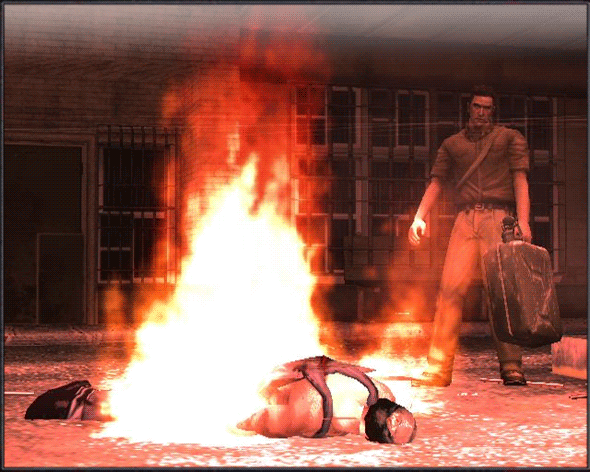Since it was introduced, the Nintendo Wii system has been hailed as a revolution in video gaming because of its motion-activated controls that allow a player to participate physically. That’s all well and good when the motion is a tennis stroke. But what about when it’s a sawing motion, one used to separate a limb from a body, and the scene on the screen shows all the gory details? The game to attract scrutiny “Manhunt 2”, from Rockstar Games, the company behind the controversial Grand Theft Auto series, but it is already creating a stir. In the game, the player assumes the role of an escaped mental patient who goes on a killing spree. In the United States the game has received the most restrictive rating possible, ‘Adult Only’, from the nation’s Entertainment Software Rating Board . An AO rating, which is rare and typically applied to games with mature content, means nobody under 18 can buy the game. Critic’s argue that the combination of Manhunt 2 (the game noted for its “sustained and cumulative casual sadism”), with the Wii the game controller that’s so engrossingly interactive that it led to a multitude of video game incidents, provides far too much reality for the the young audience of video gamers, the under 18 set.”You can use a saw blade and cut upward into a foe’s groin and buttocks, motioning forward and backward with the Wii remote as you go.” 
“The more realistic and involving the game gets, and the greater the similarity between the action in the game and real life action, the stronger the negative effects would be,” says Joanne Cantor, a Wisconsin research psychologist who has spent 30 years studying the effects of media violence on children. “No, your son may not turn into a criminal. But exposure will take a toll on his life somewhere, probably in interpersonal relationships. These are subtle effects. They take time to surface. A teen isn’t going to notice them.”
David Finkelhor , co director of the Family Research Lab at the University of New Hampshire, says no game alone is going to drag a child into criminal activity. “It’s when you have other potentiating factors — family problems, mental health issues, extreme stress, dangerous neighborhoods,” he says. “Playing these games with or without the Wii enhancement is not going to take the typical teenage boy and make a killer out of him.” In fact, he says, in the 10 or 12 years in which violent video games have proliferated, the juvenile crime rate has gone down, as have school homicides.
“No question Manhunt goes beyo nd the pale in terms of violence. I’m sure this one will be worse,” he says. “But that Wii interactivity adds an extra kicker to what happens in the brain is purely speculative. The Wii technology isn’t as bad as some folks say or as good as Nintendo wants you to believe.” Dennis McCauley, editor of gamepolitics.com says.
nd the pale in terms of violence. I’m sure this one will be worse,” he says. “But that Wii interactivity adds an extra kicker to what happens in the brain is purely speculative. The Wii technology isn’t as bad as some folks say or as good as Nintendo wants you to believe.” Dennis McCauley, editor of gamepolitics.com says.
Just to be clear, however, the AO version will never see the light of day. Turns out, Sony and Nintendo won’t allow AO games on their systems.
(The Entertainment Software Rating Board gives the company 30 days from the time of the AO rating to resubmit for a lesser rating.)
“The Nintendo company is knowingly exposing our children to disturbing acts of foppishness right in our living rooms,” said Roberts of PAW. “Even more frightening, the motion-sensing technology teaches them that the only way to resolve conflicts is to flail their arms in acts of fruity aggression.”
Assuming the children are safe, is virtually disemboweling someone with the full body interaction provided by the Wii different than pressing a few buttons in other video game systems such as PS2? Of course, it is acceptable under the Constitution. What we’re pondering here is an image problem.
In the end, Nintendo and Rockstar’s parent company may end up having no choice but to meet somewhere in the middle.